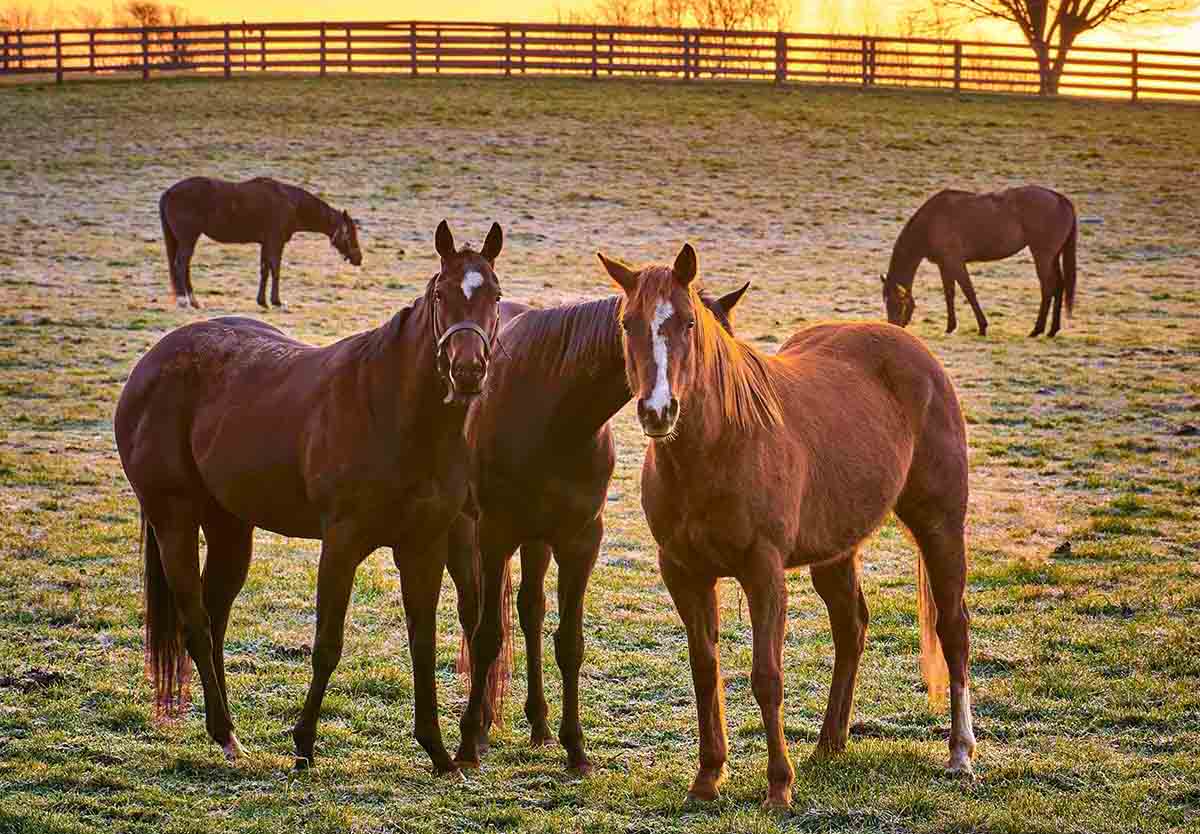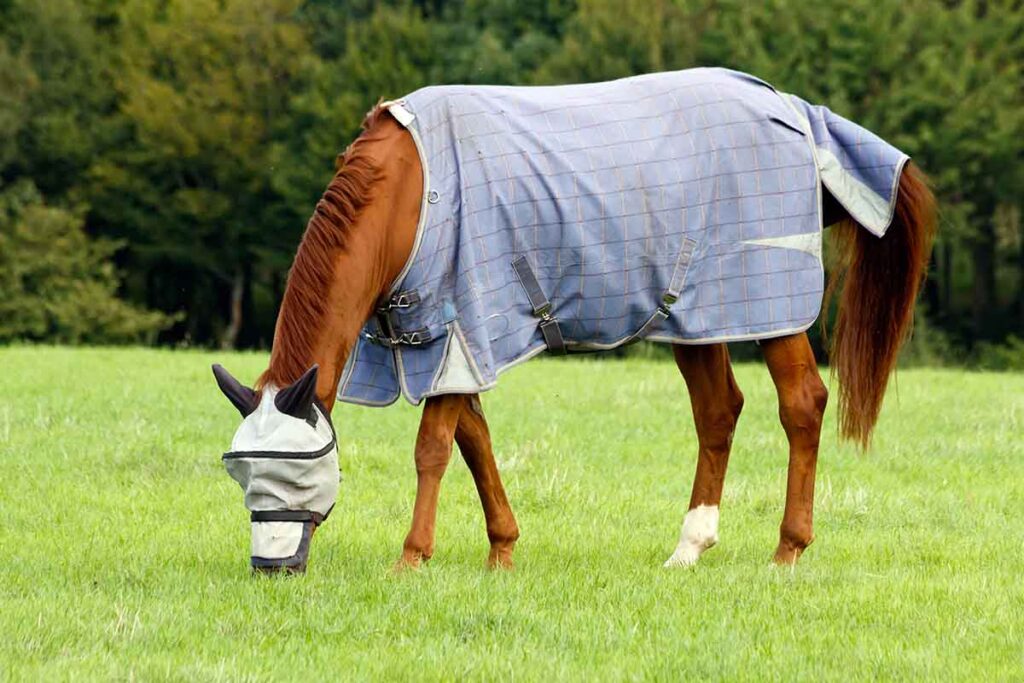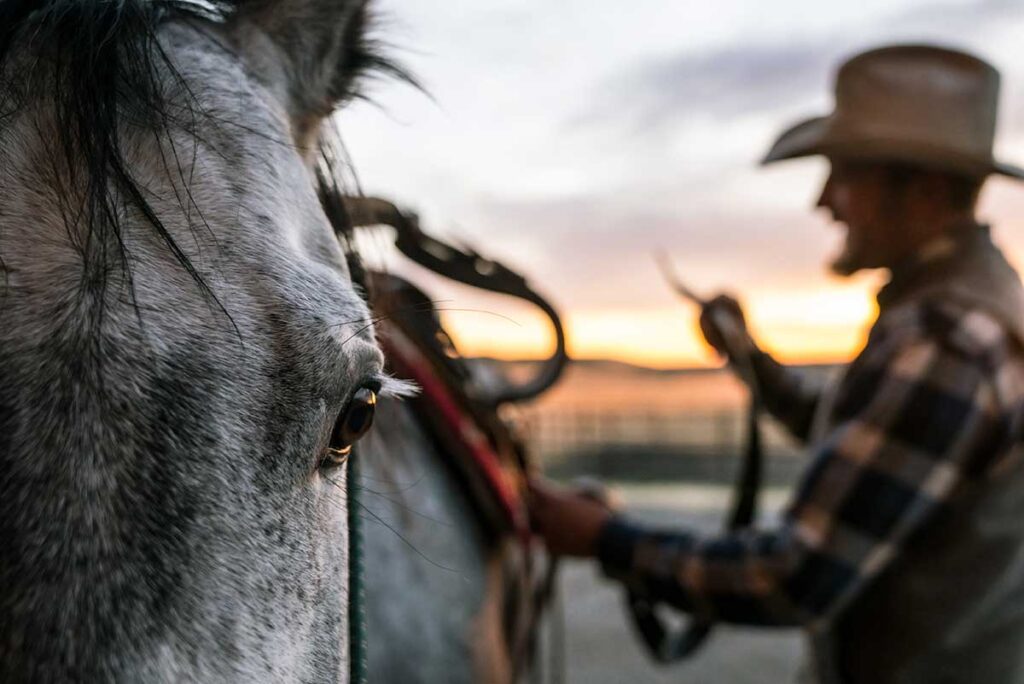Many horse owners complain of herd-bound behaviors in their equids. A “herd-bound” horse is one that becomes upset or agitated by any change in proximity to other horses. For example, when a rider attempts to lead a horse away from the barn, the horse balks (plants his feet), spins toward home, or even rears. Or, a stalled horse weaves back and forth as a neighboring horse is haltered and begins to run circles in the stall and vocalize loudly when the neighbor is taken away. This can occur with other horses in general or to one specific horse.
Horses experiencing such separation distress can quickly become dangerous to ride or handle, potentially injuring people or themselves. Therefore, it’s important to understand why this happens and how you can potentially resolve the issue
Relax, it’s Normal!
To understand the issue, we first must understand the horse as a species. Horses have evolved over millennia with three basic core needs I call “the 3 Fs”: To be with Friends (members of the same species), to Forage almost continuously, and to have the Freedom to engage in species-typical behaviors. I deliberately put ‘Friend’ as the first F, as research has shown that horses will actively choose to be with other horses, even instead of eating.
Being with other horses is one of the primary ways horses have survived as a species. Horses need other horses to stay alive. Under natural conditions, it is rare for horses to be alone for extended periods. Mares will temporarily socially isolate themselves to give birth, and a solitary stallion will seek out other bachelor stallions with whom to live while he is between bands. But social isolation is not the horse’s norm.
Beyond mere survival, friends matter to horses. A highly social species, horses spend more time in group life engaged in affiliative (bond-building) behaviors than they do in agonistic (aggressive) ones. Whether mutually grooming, playing, or even learning what to eat through observation, group living allows horses to not only survive but thrive.
When we know this about horses, it is easier to understand why they panic in fear when separated from others. Such behavior is a completely normal response for the horse.
Overcoming Innate Responses
While panicking in fear might be a normal, understandable response to social isolation, it does not need to be what happens. Horses can be taught to calmly accept temporary social isolation.
Addressing the issue should ideally begin at birth. This means allowing young horses to live in diverse social groups so they can develop normal social behaviors. Factors such as certain weaning practices or failure to allow young horses to develop socially can profoundly affect a horse’s ability to cope with isolation later on. These horses might not know how to modulate their emotional responses to conflict, or they might fear social interactions. Perhaps paradoxically, these factors can also greatly intensify the fear a horse feels when socially isolated.
While teaching horses valuable life skills is undoubtedly an art, more recently it has also become a well-studied science. We know from research that the best way to teach herd-bound horses to tolerate temporary isolation is not the “tough love” method of the past. Flooding, a technique that involves exposing an animal to something that scares them at full intensity, is a popular way to try to address herd-bound behavior. This typically involves abruptly isolating a horse and leaving him until he appears to stop panicking. These approaches are not only grave welfare issues but can also worsen the horse’s fear.
The recommended approach is sympathetic and progressive training that does not trigger fear. In addition to early life experiences, this involves developing a training plan that includes gradually increasing factors such as the distance from which the herd-bound horse is from others, the duration of time the horse is isolated, and “distractions” such as easier or more challenging situations in which the horse is isolated.
Take-Home Message
While we can’t undo negative early learning, with the help of a qualified behavior professional, even seriously herd-bound cases can be addressed. And, when we understand that fearful panic is a normal response to social isolation, it can help us better understand and resolve herd-bound behavior in horses.
Related Reading:
- Understanding the Basics of How Horses Learn
- From Body Language to Behavior: How Horses Communicate
- Smart Strategies for Handling Anxious Horses
Lauren Fraser, MSc, FFCP, has helped people understand horse behavior problems since 2006. With a background working as a horse trainer, an MSc in clinical animal behavior, and more than a decade working as an equine behavior consultant, Lauren’s approach gets to the heart of why horses behave the way they do and addresses issues using low-stress methods. Lauren also guest lectures at universities, presents at conferences, and creates educational programs for horse owners and equine professionals.
Are you enjoying this content? Sign up for My New Horse’s FREE newsletter to get the latest horse owner info and fun facts delivered straight to your inbox!








